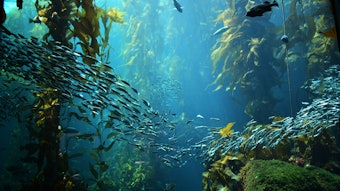Download the complete article here.
A sunscreen formula’s ability to protect the skin from UV damage depends on a wide variety of factors. These factors include chemical structures of UV fi lters, concentrations of active ingredients in the formula, and importantly, what concentration can be achieved on application to the skin and how much remains during the water wash process. The emulsifi er(s) and fatty components in an applied sunscreen emulsion are the principal infl uences on the product’s effectiveness.
In a previous study, we concluded that a new phosphate emulsifi era improved the SPF water wash resistance of sunscreen formulations, and the structural characteristics of the emulsion were also very important. The INCI name of this ingredient is cetearyl alcohol (and) dicetyl phosphate (and) ceteth-10 phosphate. Figure 1 shows a drawing of the two phosphate esters. In general, phosphate esters demonstrate the following chemical properties:
• The ionic phosphate group constitutes a powerful O/W emulsifying agent.
• The ionic phosphate group is shielded by the alkyl chains, hence the “crypto” in the term “cryptoanionic.”
• Unlike carboxylic acid esters, the phosphate ester link is very stable at high and low pH.
• The emulsification characteristics of the ester depend on the degree of neutralization of the free-acid groups (ratio of free-acid/mono ester/di-ester).
• The lipophilic character is critically dependent upon the alkyl chain length, chain-length distribution, and number of EO (ethylene oxide) groups in the molecule.
• Fatty alcohols work well in combination with phosphate esters made from these alcohols.










